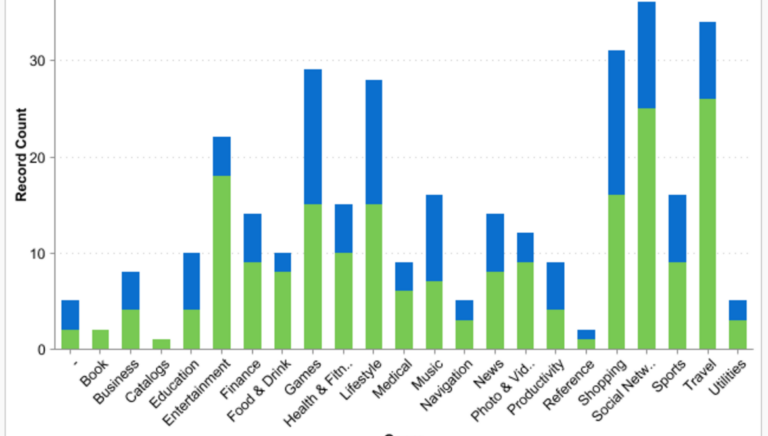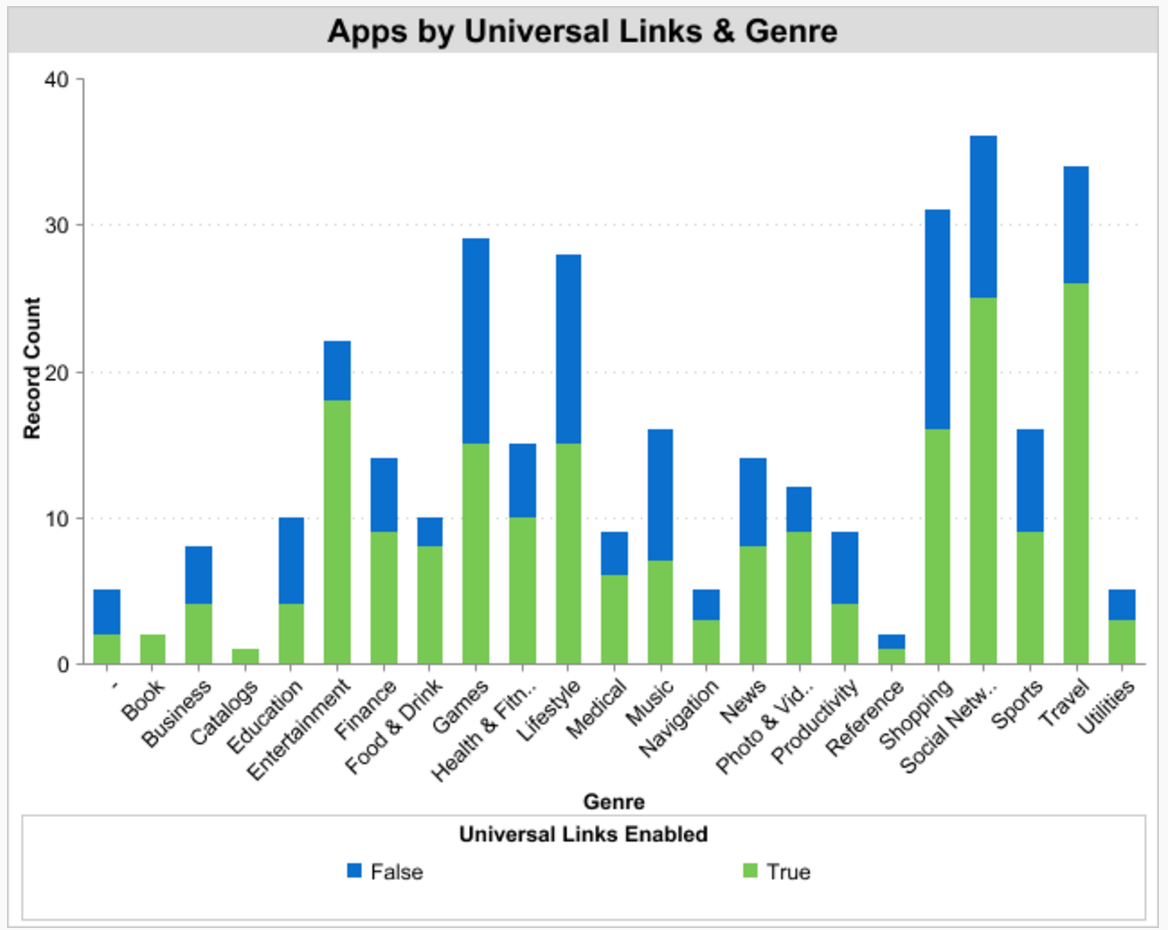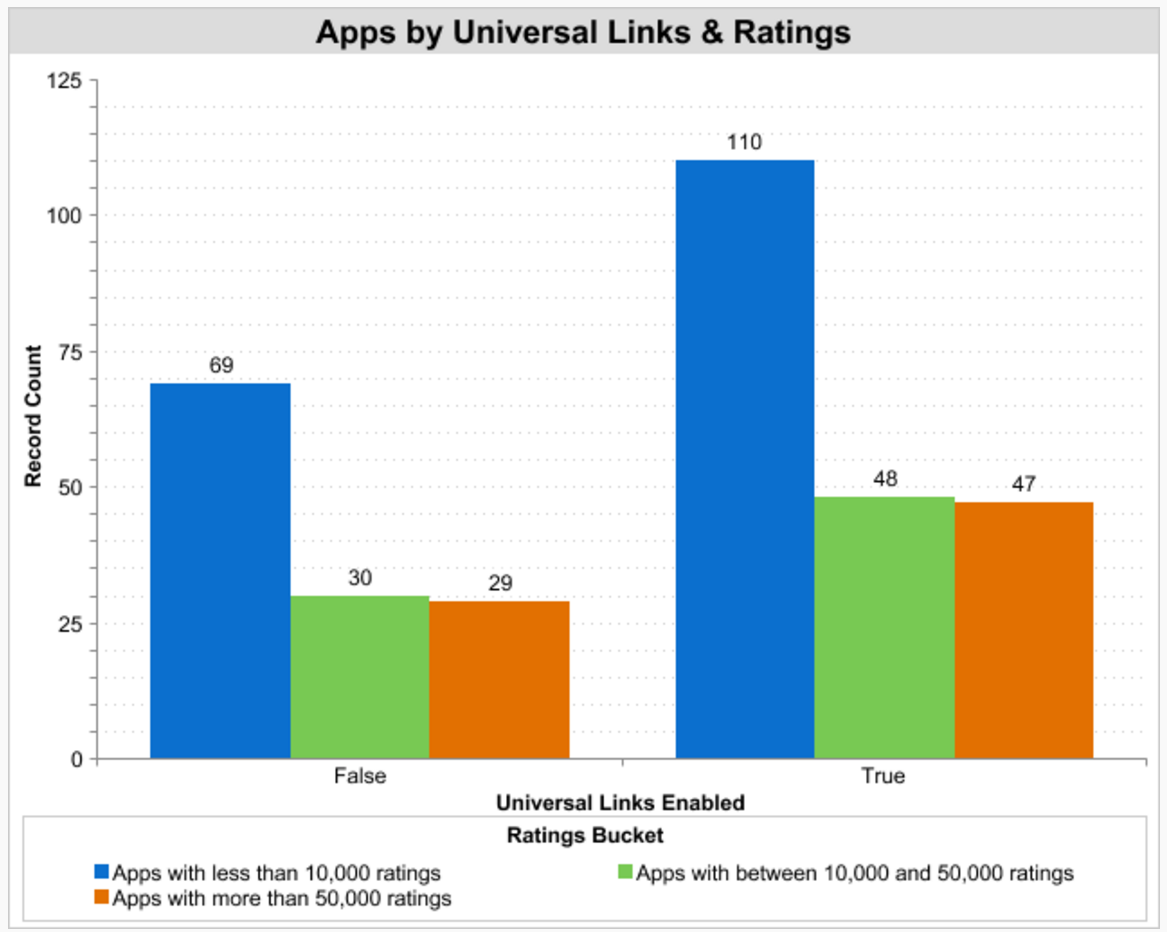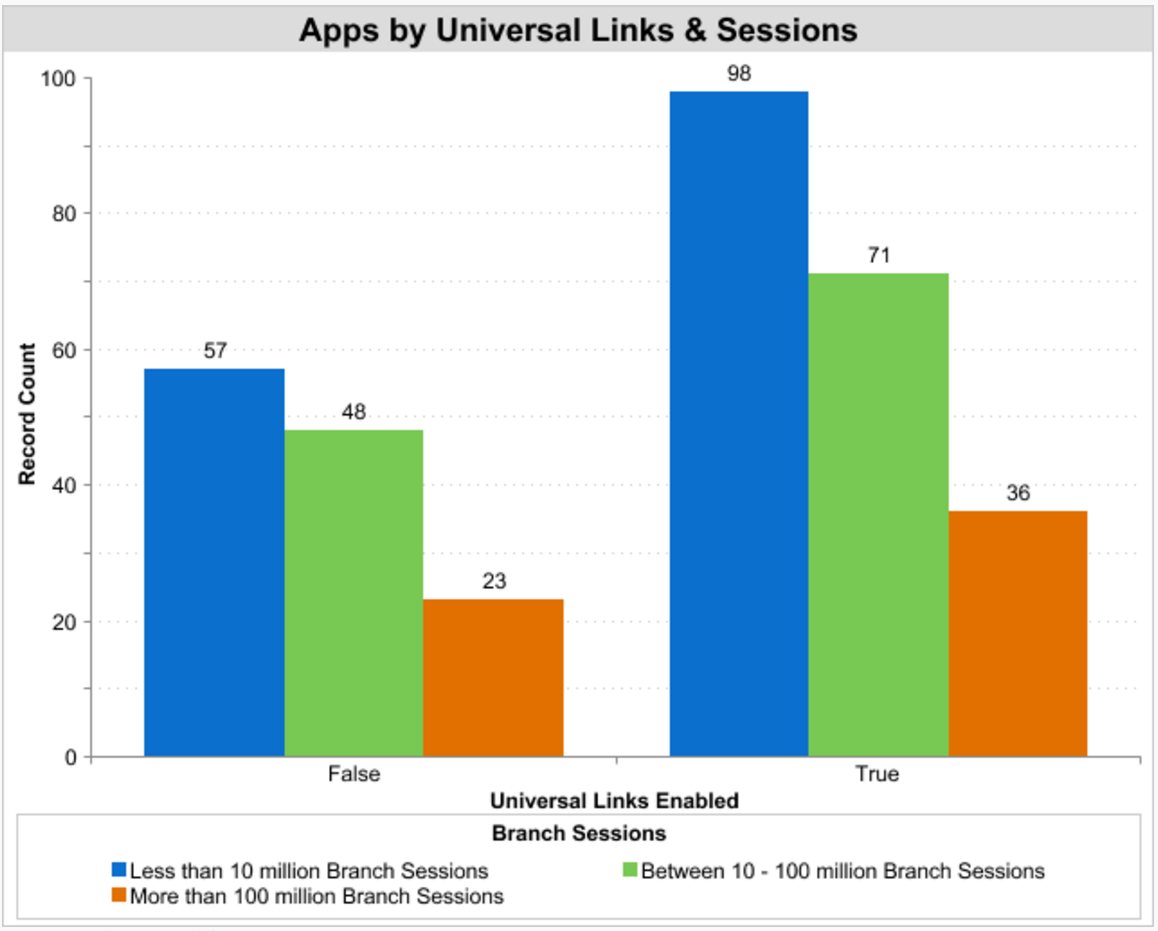Implementing Universal Links results in a 40% increased conversion to open rate. Continue reading to learn more about the study.
Since Apple’s launch of Universal Links in September 2015, the entire mobile growth community has wondered: “Do Universal Links really make a difference?”
The speculated theory behind the launch of Universal Links is that Apple wanted more control over the way their users flow into mobile apps. It has also been suggested that they wanted to do away with the URI scheme, and instead launch a system that drove users into native applications much more intuitively. The rise of Universal Links was focused both on driving a better UX and ensuring higher conversion to open for existing users … or so we thought.
However, something was conspicuously missing from the Universal Links launch and, in fact, that something is often what mobile marketing and growth teams care about most: the data demonstrating the value that Universal Links supposedly provide.
Here at Branch, we care a lot about this proof. In fact, we’ve followed the saga of Universal Links first hand — and we’ve even outlined all of the issues with Universal Links and the ways in which Apple can improve them.
It’s no secret among developers that Universal Links can be incredibly tricky to setup and manage. Ensuring a seamless UX and high conversion rate on iOS is no easy task with Universal Links either. For the majority of US brands, users on Apple devices running iOS 9.2. and higher represent a major share of the paying audience. So what does this mean for your app? Basically, you should probably enable Universal Links because a major portion of your paying audience is using them by default and it makes for a much better user experience.
Of course, Universal Links have a substantial number of flaws, but they are still worth the effort. They are especially valuable if you power them with Branch.
The Experiment
In order to understand the effectiveness of Universal Links enabled on Branch-powered apps, the Branch data team designed a test. This test was then able to provide evidence to determine Universal Link’s effectiveness in the whole of the mobile ecosystem.
Before we get into the nitty-gritty, let’s offer a bit of clarification: when we say “having Universal Links enabled” we mean that the app in question has enabled Universal Links on their Branch instance. Essentially, a user who taps a Branch link will be driven directly to the app.
Note: If you’ve already set up Universal Links and they don’t seem to be working for you, head over to our Universal Link Validator page to test what’s going wrong.
Keep in mind that it is important to make the distinction between enabling Universal Links on an app’s Branch instance and enabling Universal Links on your primary domain, because the latter is possible as well. However, the impact of such an action can’t be measured, because Apple provides zero attribution or data on users clicking Universal Links.
Yes, that’s right. Zero attribution and data. This black box surrounding Universal Links is one of the reasons why so many people rely on Branch for attribution and user-source tracking along with excellent UX deep linking.
Now, back to the experiment…
The Test – A Large Scale Comparison of Apps with and without Universal Links Enabled (n > 300)
To help us quell our curiosity, we took a sample of approximately 300 apps and compared various metrics across the two groups, controlling for when Universal Links were or were not enabled on the Branch platform.
How did we pick these apps? The apps had to meet the following criteria: 1. It had to have more than 500 reviews on the App Store and 2. We must have seen more than a million sessions from said app on the Branch platform.
Graph #1 – Sample Apps by Universal Link Enablement & Genre
Graph #2 – Sample Apps by Universal Link Enabled & Ratings
Graph #3 – Sample Apps by Universal Link Enablement & Branch Sessions at Time of Sampling
Test Results
Although we looked at a number of different metrics, we primarily focused on volume and conversion of “opens.”
Ultimately, we found that apps with Universal Links enabled have a 25.50% conversion to open. This is compared to apps that don’t have Universal Links enabled, which reported a 18.24% conversion to open. You may be having the same immediate thought as I did: a 40% improvement is a huge difference.
Understanding What We Measured and the Results
After analyzing all of the data available to us, we found solid directional evidence in support of adopting Universal Links. As one might expect, the measured metric “opens” with Universal Links has a much better margin of improvement than installs. After all, Universal Links only change the UX for existing users who already have the app installed (because with Universal Links enabled, when a user opens the app he or she is taken directly to the app with no redirect through the app store).
Our test suggests that while Universal Links are not as effective for improving installs, they showed a huge improvement in conversion to open. We believe that the transitionless routing right to the app that is provided by Universal Links is the reason why we see the increase in conversion from 18.24% to 25.50%, a whole 40% improvement in conversion to open.
The big takeaway is that iOS apps that have Universal Links enabled actually perform much better than apps that don’t have Universal Links enabled.
The next steps would be to compare the conversion rate before and after apps turn on Universal Links across a wide variety of possible confounding factors. It is important to identify and eliminate these confounding variables to obtain the most accurate data.
The Final TLDR?
On their own, Universal Links seem effective at driving users in terms of engagement. More importantly, however, this data reconfirms that knowing Universal Links’ conversion to open is one of the best ways to measure the value they provide — and Branch is the only deep linking tool that lets you do just this.
The way we see it is simple: what you do with your users once they open your app matters far more than ensuring that your users are using Universal Links in the first place.
In fact, given the time and effort that goes into setting up Universal Links, it might make sense to do it only on sources you can track, like your Branch links, considering that increased conversion to open is somewhat low and tracking on Universal Links that are enabled on your primary domain is not provided.
For all the growth teams out there striving for success, we hope this information helps you prioritize your product roadmap. Happy linking!


























